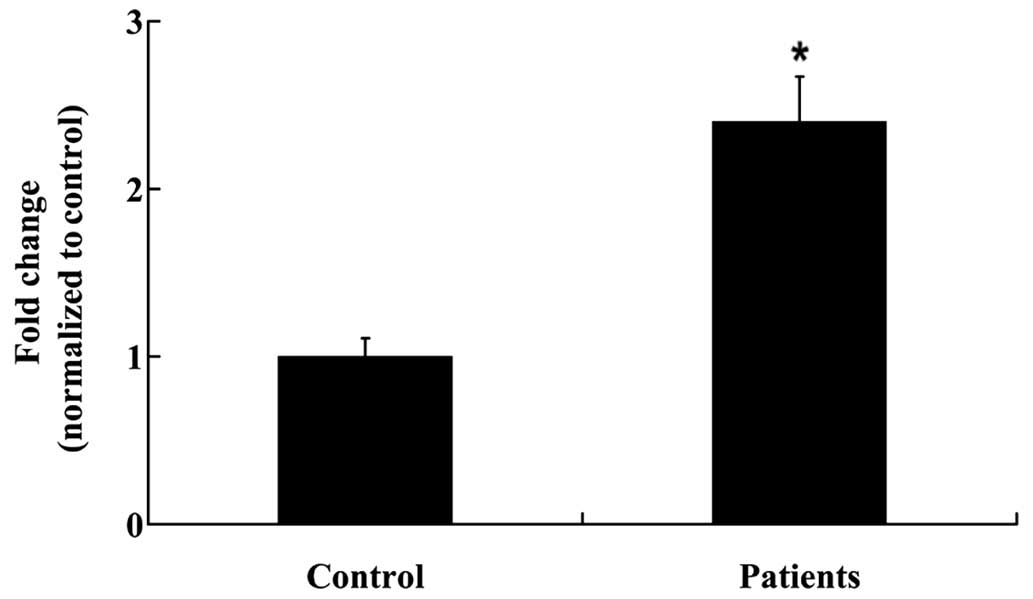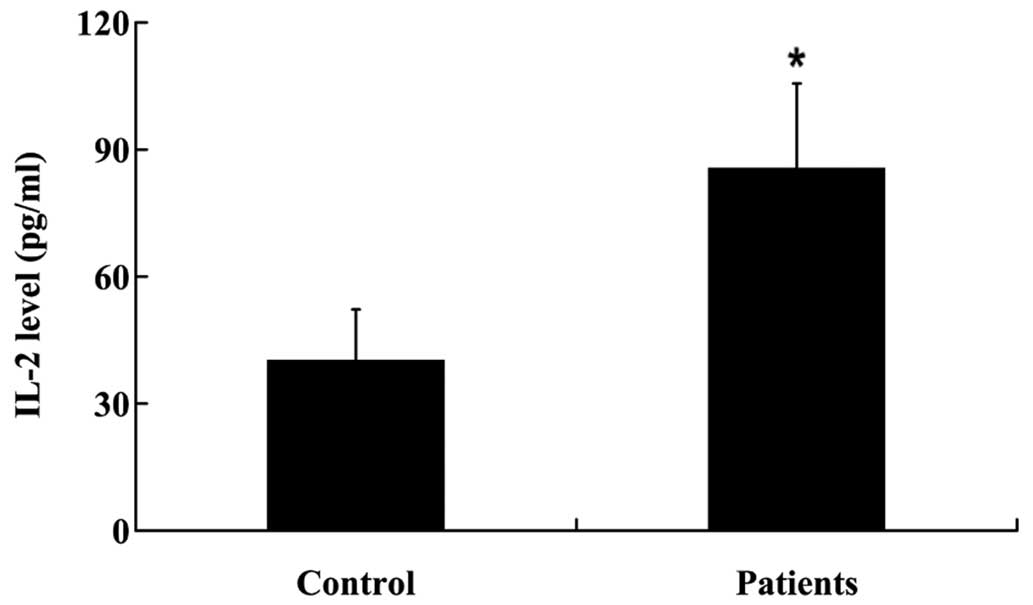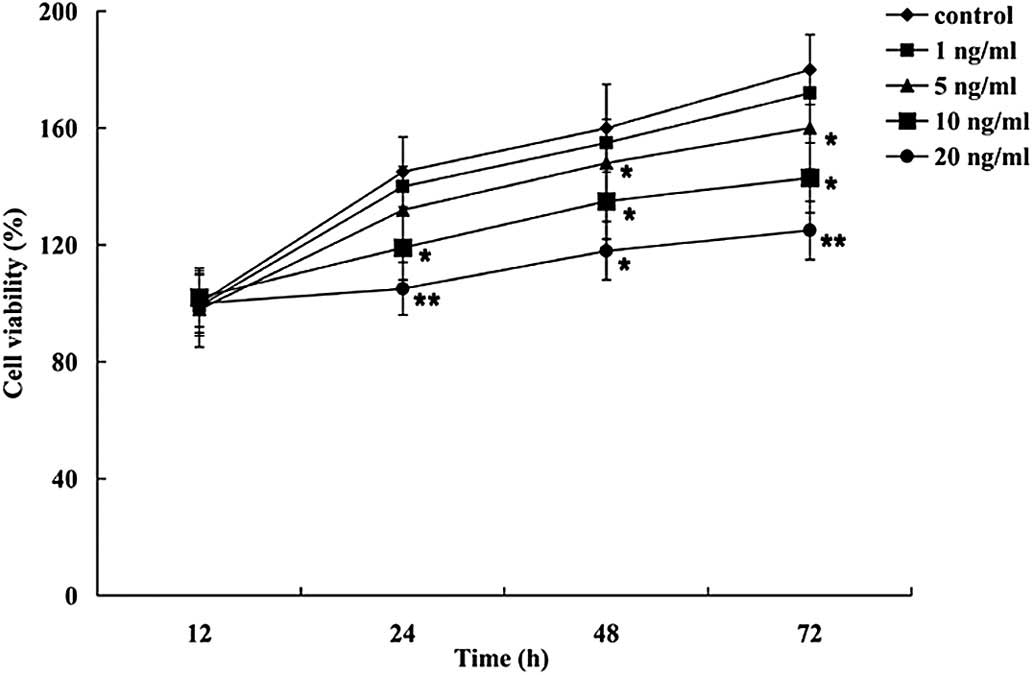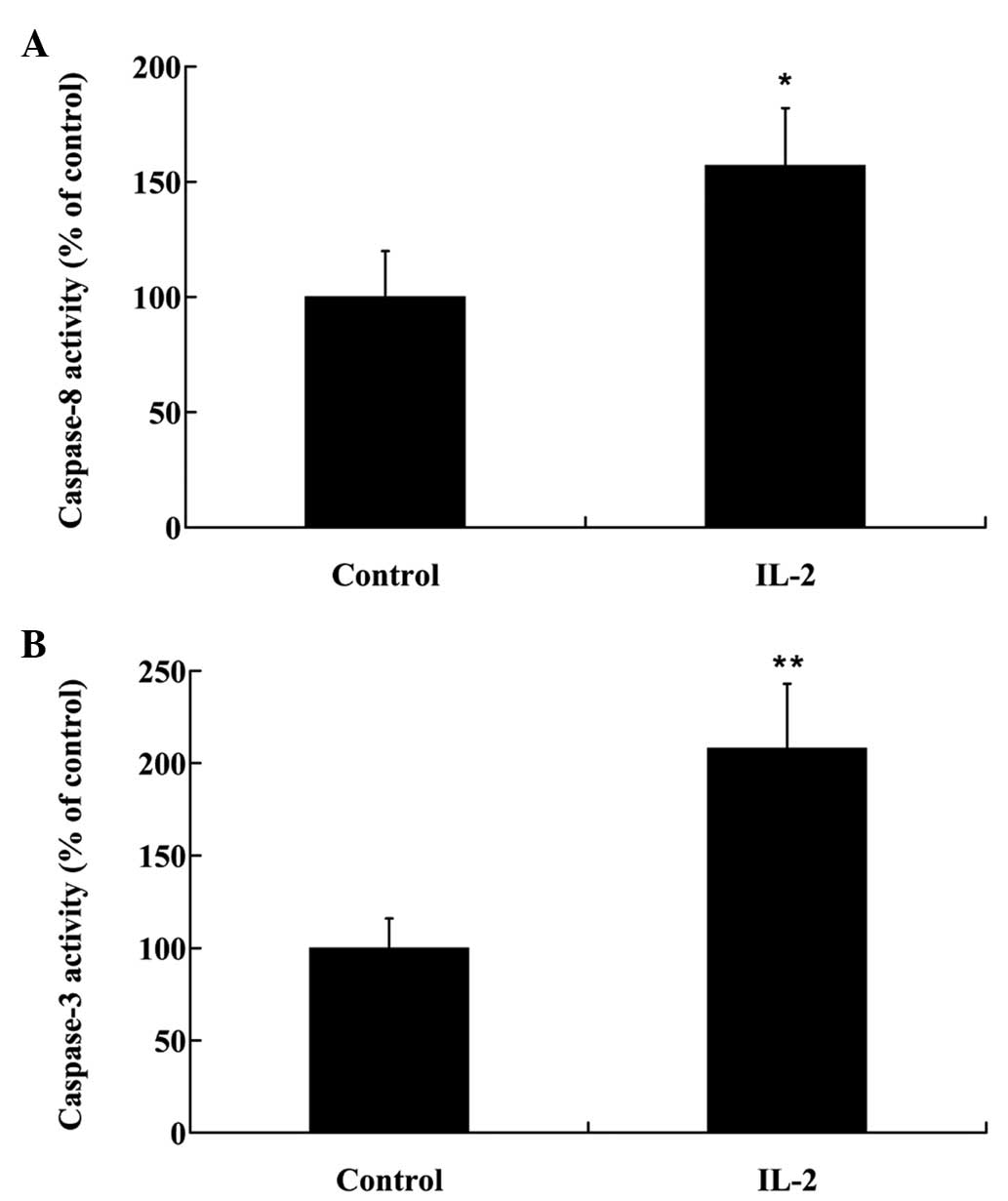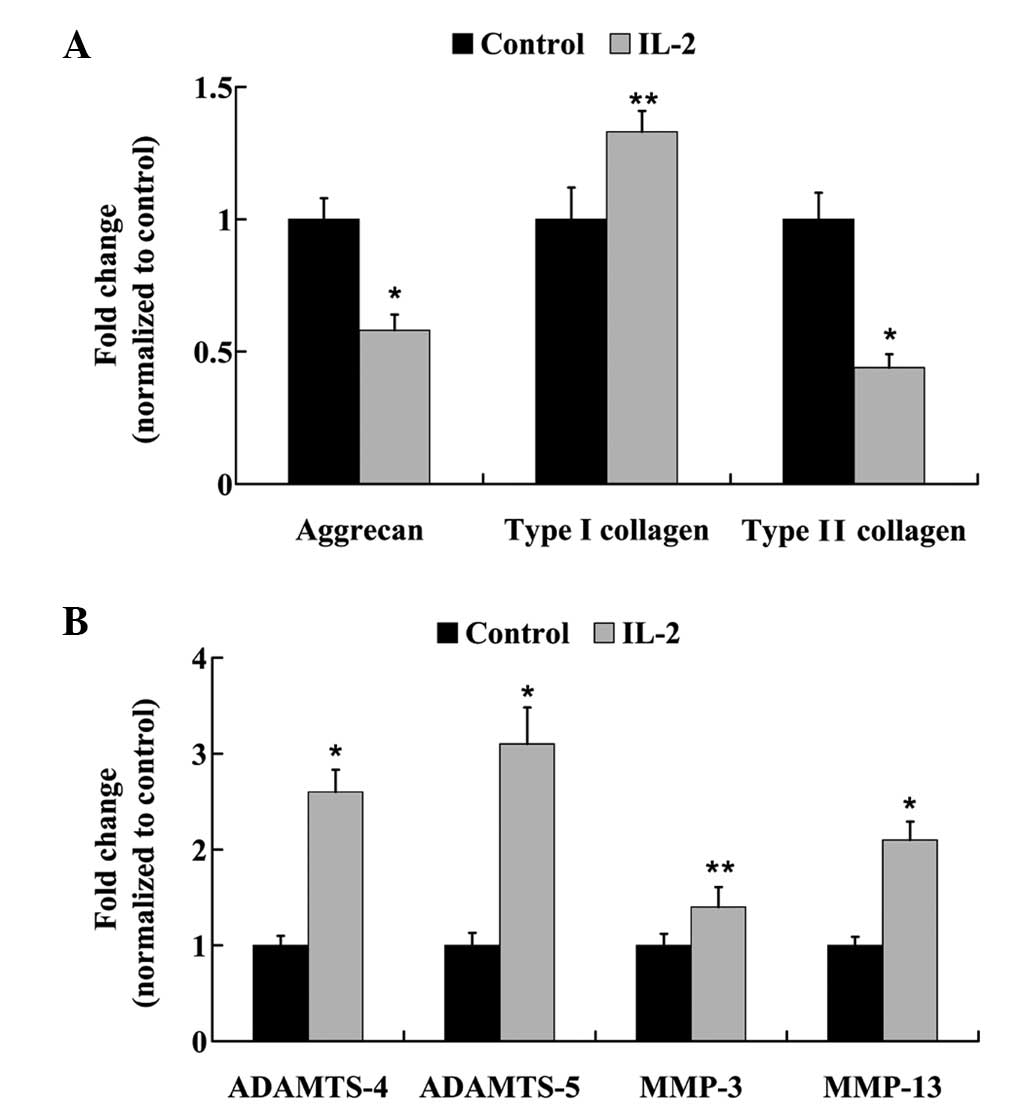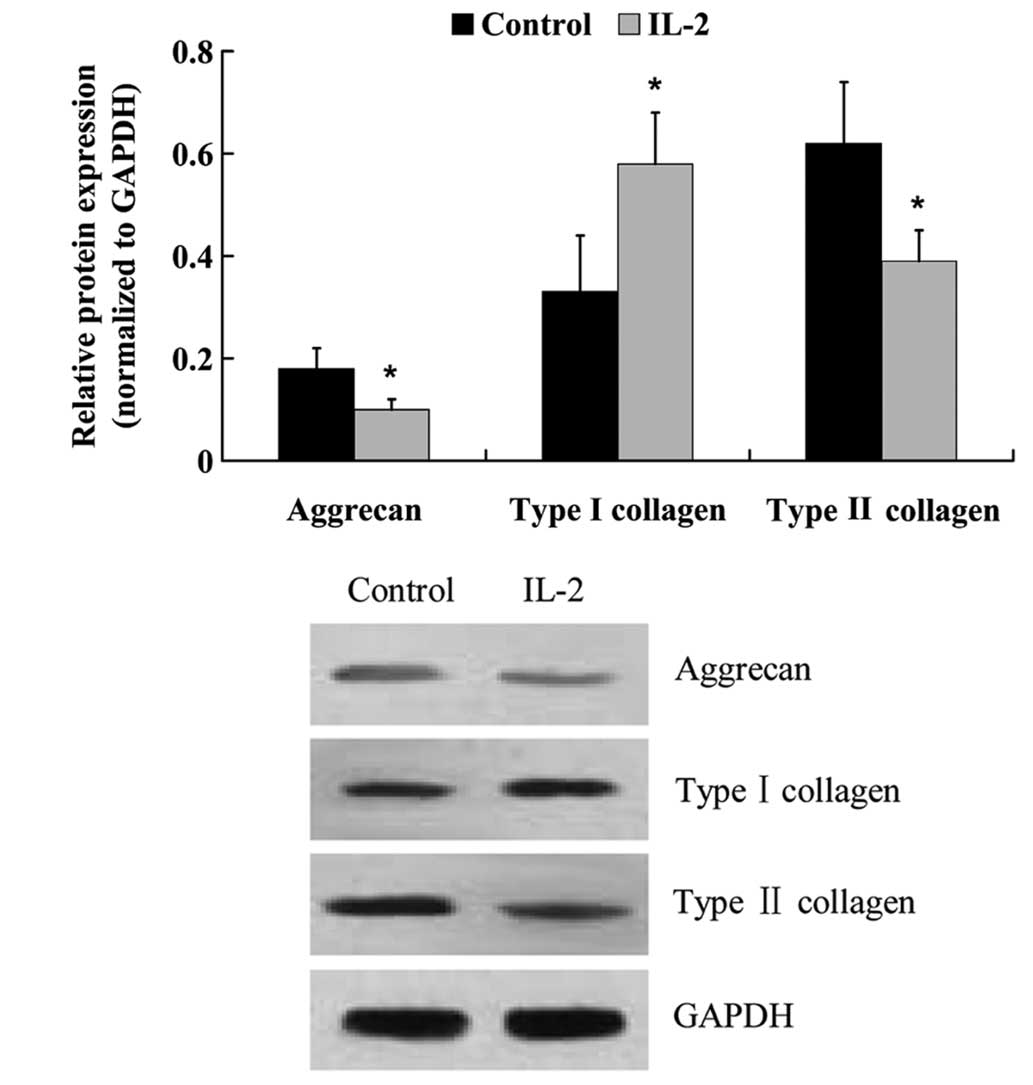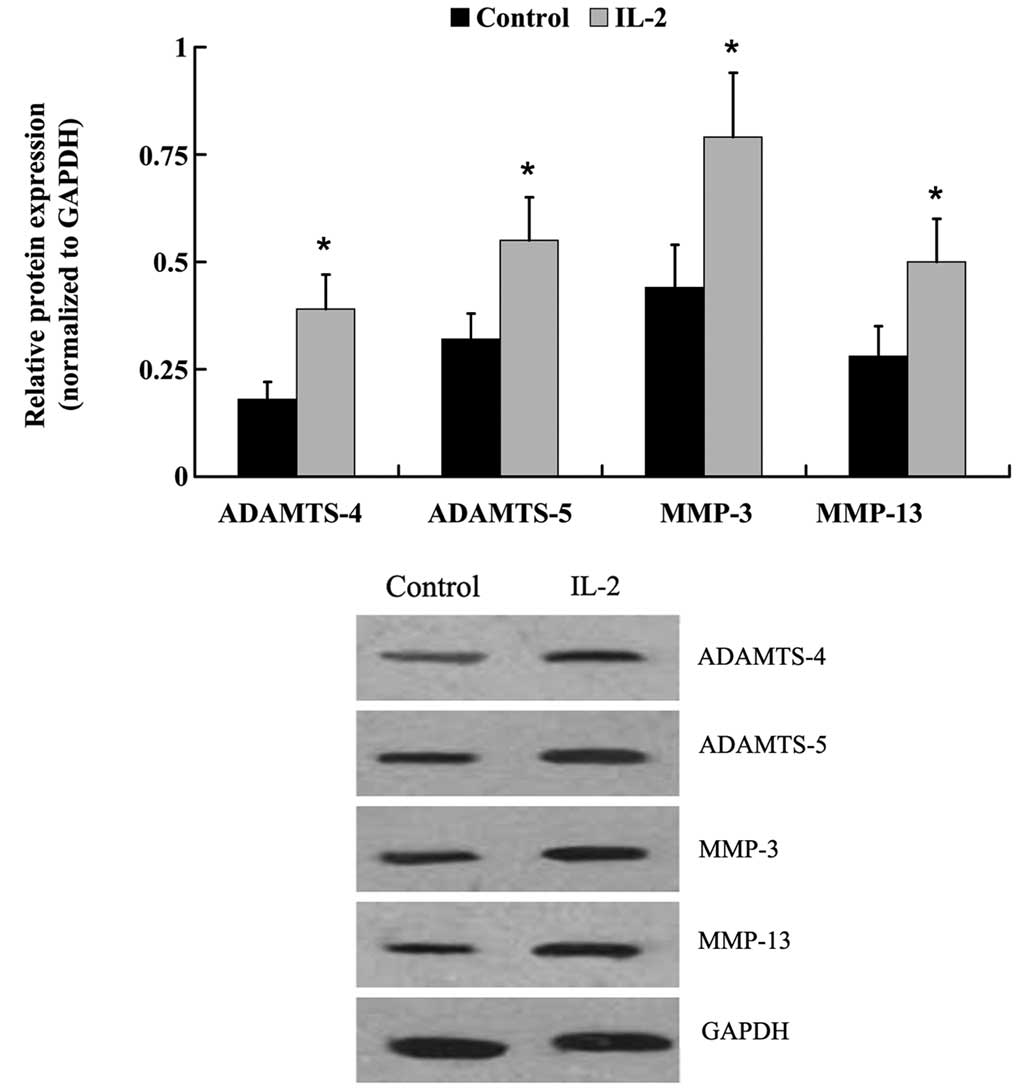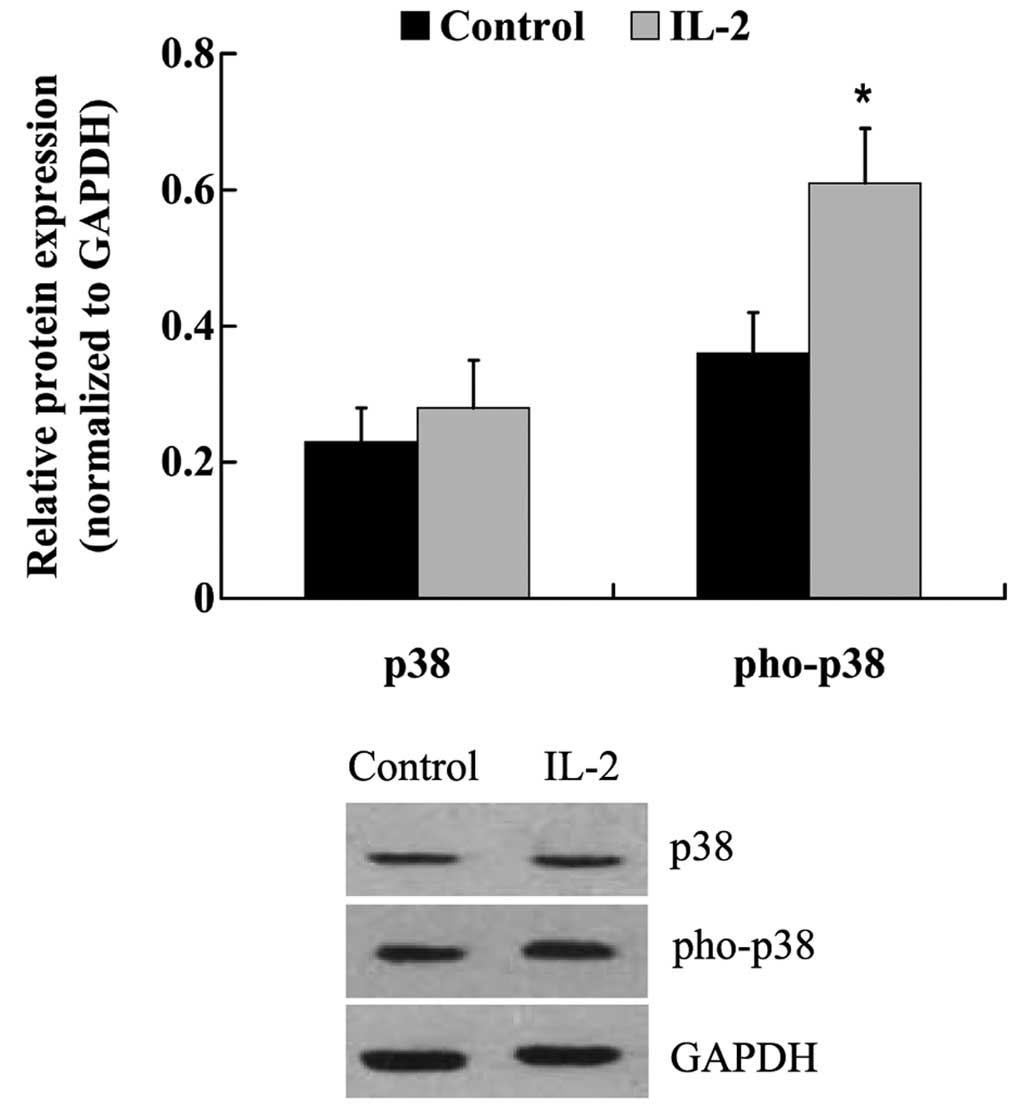|
1
|
Miller JA, Schmatz C and Schultz AB:
Lumbar disc degeneration: Correlation with age, sex, and spine
level in 600 autopsy specimens. Spine (Phila Pa 1976). 13:173–178.
1988. View Article : Google Scholar : PubMed/NCBI
|
|
2
|
Smith LJ, Nerurkar NL, Choi KS, Harfe BD
and Elliott DM: Degeneration and regeneration of the intervertebral
disc: Lessons from development. Dis Model Mech. 4:31–41. 2011.
View Article : Google Scholar : PubMed/NCBI
|
|
3
|
Adams MA and Roughley PJ: What is
intervertebral disc degeneration, and what causes it? Spine (Phila
Pa 1976). 31:2151–2161. 2006. View Article : Google Scholar : PubMed/NCBI
|
|
4
|
Risbud MV and Shapiro IM: Role of
cytokines in intervertebral disc degeneration: Pain and disc
content. Nat Rev Rheumatol. 10:44–56. 2014. View Article : Google Scholar : PubMed/NCBI
|
|
5
|
Wang J, Markova D, Anderson DG, Zheng Z,
Shapiro IM and Risbud MV: TNF-α and IL-1β promote a
disintegrin-like and metalloprotease with thrombospondin type I
motif-5-mediated aggrecan degradation through syndecan-4 in
intervertebral disc. J Biol Chem. 286:39738–39749. 2011. View Article : Google Scholar : PubMed/NCBI
|
|
6
|
Shamji MF, Setton LA, Jarvis W, So S, Chen
J, Jing L, Bullock R, Isaacs RE, Brown C and Richardson WJ:
Proinflammatory cytokine expression profile in degenerated and
herniated human intervertebral disc tissues. Arthritis Rheum.
62:1974–1982. 2010.PubMed/NCBI
|
|
7
|
Kołodziejska-Sawerska A, Rychlik A, Depta
A, Wdowiak M, Nowicki M and Kander M: Cytokines in canine
inflammatory bowel disease. Pol J Vet Sci. 16:165–171.
2013.PubMed/NCBI
|
|
8
|
Shachar I and Karin N: The dual roles of
inflammatory cytokines and chemokines in the regulation of
autoimmune diseases and their clinical implications. J Leukoc Biol.
93:51–61. 2013. View Article : Google Scholar : PubMed/NCBI
|
|
9
|
Karli P, Martlé V, Bossens K, Summerfield
A, Doherr MG, Turner P, Vandevelde M, Forterre F and Henke D:
Dominance of chemokine ligand 2 and matrix metalloproteinase-2 and
−9 and suppression of pro-inflammatory cytokines in the epidural
compartment after intervertebral disc extrusion in a canine model.
Spine J. 14:2976–2984. 2014. View Article : Google Scholar : PubMed/NCBI
|
|
10
|
Akyol S, Eraslan BS, Etyemez H, Tanriverdi
T and Hanci M: Catabolic cytokine expressions in patients with
degenerative disc disease. Turk Neurosurg. 20:492–499.
2010.PubMed/NCBI
|
|
11
|
Livak KJ and Schmittgen TD: Analysis of
relative gene expression data using real-time quantitative PCR and
the 2(-Delta Delta C(T)) Method. Methods. 25:402–408. 2001.
View Article : Google Scholar : PubMed/NCBI
|
|
12
|
Minogue BM, Richardson SM, Zeef LA,
Freemont AJ and Hoyland JA: Characterization of the human nucleus
pulposus cell phenotype and evaluation of novel marker gene
expression to define adult stem cell differentiation. Arthritis
Rheum. 62:3695–3705. 2010. View Article : Google Scholar : PubMed/NCBI
|
|
13
|
McCann MR, Bacher CA and Séguin CA:
Exploiting notochord cells for stem cell-based regeneration of the
intervertebral disc. J Cell Commun Signal. 5:39–43. 2011.
View Article : Google Scholar : PubMed/NCBI
|
|
14
|
Le Maitre CL, Hoyland JA and Freemont AJ:
Catabolic cytokine expression in degenerate and herniated human
intervertebral discs: IL-1beta and TNFalpha expression profile.
Arthritis Res Ther. 9:R772007. View
Article : Google Scholar : PubMed/NCBI
|
|
15
|
Deyo RA and Tsui-Wu YJ: Descriptive
epidemiology of low-back pain and its related medical care in the
United States. Spine (Phila Pa 1976). 12:264–268. 1987. View Article : Google Scholar : PubMed/NCBI
|
|
16
|
Buckwalter JA: Aging and degeneration of
the human intervertebral disc. Spine (Phila Pa 1976). 20:1307–1314.
1995.PubMed/NCBI
|
|
17
|
Chen JW, Ni BB, Li B, Yang YH, Jiang SD
and Jiang LS: The responses of autophagy and apoptosis to oxidative
stress in nucleus pulposus cells: Implications for disc
degeneration. Cell Physiol Biochem. 34:1175–1189. 2014. View Article : Google Scholar : PubMed/NCBI
|
|
18
|
Gruber HE and Hanley EN Jr: Biologic
strategies for the therapy of intervertebral disc degeneration.
Expert Opin Biol Ther. 3:1209–1214. 2003. View Article : Google Scholar : PubMed/NCBI
|
|
19
|
Zhao CQ, Jiang LS and Dai LY: Programmed
cell death in intervertebral disc degeneration. Apoptosis.
11:2079–2088. 2006. View Article : Google Scholar : PubMed/NCBI
|
|
20
|
Zhao CQ, Wang LM, Jiang LS and Dai LY: The
cell biology of intervertebral disc aging and degeneration. Ageing
Res Rev. 6:247–261. 2007. View Article : Google Scholar : PubMed/NCBI
|
|
21
|
Chen YF, Zhang YZ, Zhang WL, Luan GN, Liu
ZH, Gao Y, Wan ZY, Sun Z, Zhu S, Samartzis D, et al: Insights into
the hallmarks of human nucleus pulposus cells with particular
reference to cell viability, phagocytic potential and long process
formation. Int J Med Sci. 10:1805–1816. 2013. View Article : Google Scholar : PubMed/NCBI
|
|
22
|
Jiang L, Zhang X, Zheng X, Ru A, Ni X, Wu
Y, Tian N, Huang Y, Xue E, Wang X and Xu H: Apoptosis, senescence,
and autophagy in rat nucleus pulposus cells: Implications for
diabetic intervertebral disc degeneration. J Orthop Res.
31:692–702. 2013. View Article : Google Scholar : PubMed/NCBI
|
|
23
|
Zeng S, Liu L and Wang J: Significance of
BNIP3 gene expression and cell apoptosis in nucleus pulposus of
degenerative intervertebral disc in rabbits. Zhongguo Xiu Fu Chong
Jian Wai Ke Za Zhi. 24:1367–1371. 2010.(In Chinese). PubMed/NCBI
|
|
24
|
Yurube T, Hirata H, Kakutani K, Maeno K,
Takada T, Zhang Z, Takayama K, Matsushita T, Kuroda R, Kurosaka M
and Nishida K: Notochordal cell disappearance and modes of
apoptotic cell death in a rat tail static compression-induced disc
degeneration model. Arthritis Res Ther. 16:R312014. View Article : Google Scholar : PubMed/NCBI
|
|
25
|
Erwin WM and Hood KE: The cellular and
molecular biology of the intervertebral disc: A clinician's primer.
J Can Chiropr Assoc. 58:246–257. 2014.PubMed/NCBI
|
|
26
|
Sivan SS, Hayes AJ, Wachtel E, Caterson B,
Merkher Y, Maroudas A, Brown S and Roberts S: Biochemical
composition and turnover of the extracellular matrix of the normal
and degenerate intervertebral disc. Eur Spine J. 23(Suppl 3):
S344–S353. 2014. View Article : Google Scholar : PubMed/NCBI
|
|
27
|
Antoniou J, Demers CN, Beaudoin G, Goswami
T, Mwale F, Aebi M and Alini M: Apparent diffusion coefficient of
intervertebral discs related to matrix composition and integrity.
Magn Reson Imaging. 22:963–972. 2004. View Article : Google Scholar : PubMed/NCBI
|
|
28
|
Antoniou J, Steffen T, Nelson F,
Winterbottom N, Hollander AP, Poole RA, Aebi M and Alini M: The
human lumbar intervertebral disc: Evidence for changes in the
biosynthesis and denaturation of the extracellular matrix with
growth, maturation, ageing, and degeneration. J Clin Invest.
98:996–1003. 1996. View Article : Google Scholar : PubMed/NCBI
|
|
29
|
Pritzker KP: Aging and degeneration in the
lumbar intervertebral disc. Orthop Clin North Am. 8:66–77.
1977.PubMed/NCBI
|
|
30
|
Pockert AJ, Richardson SM, Le Maitre CL,
Lyon M, Deakin JA, Buttle DJ, Freemont AJ and Hoyland JA: Modified
expression of the ADAMTS enzymes and tissue inhibitor of
metalloproteinases 3 during human intervertebral disc degeneration.
Arthritis Rheum. 60:482–491. 2009. View Article : Google Scholar : PubMed/NCBI
|
|
31
|
Arana CJ, Diamandis EP and Kandel RA:
Cartilage tissue enhances proteoglycan retention by nucleus
pulposus cells in vitro. Arthritis Rheum. 62:3395–3403. 2010.
View Article : Google Scholar : PubMed/NCBI
|
|
32
|
Hamilton DJ, Pilliar RM, Waldman S and
Kandel RA: Effect of circumferential constraint on nucleus pulposus
tissue in vitro. Spine J. 10:174–183. 2010. View Article : Google Scholar : PubMed/NCBI
|
|
33
|
Le Maitre CL, Freemont AJ and Hoyland JA:
Human disc degeneration is associated with increased MMP 7
expression. Biotech Histochem. 81:125–131. 2006. View Article : Google Scholar : PubMed/NCBI
|
|
34
|
Le Maitre CL, Pockert A, Buttle DJ,
Freemont AJ and Hoyland JA: Matrix synthesis and degradation in
human intervertebral disc degeneration. Biochem Soc Trans.
35:652–655. 2007. View Article : Google Scholar : PubMed/NCBI
|
|
35
|
MacLean JJ, Roughley PJ, Monsey RD, Alini
M and Iatridis JC: In vivo intervertebral disc remodeling: Kinetics
of mRNA expression in response to a single loading event. J Orthop
Res. 26:579–588. 2008. View Article : Google Scholar : PubMed/NCBI
|
|
36
|
Studer RK, Aboka AM, Gilbertson LG,
Georgescu H, Sowa G, Vo N and Kang JD: p38 MAPK inhibition in
nucleus pulposus cells: A potential target for treating
intervertebral disc degeneration. Spine (Phila Pa 1976).
32:2827–2833. 2007. View Article : Google Scholar : PubMed/NCBI
|



